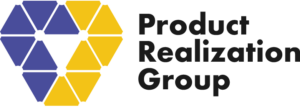-
- North America
- EMEA
Cloud Solutions Fuel Success to Overcome Any Disruption and Thrive Anytime
Despite the disruptions and challenges facing most manufacturers today, they still need to innovate rapidly and gain a competitive advantage. For many, the key to success will depend largely on whether they can implement effective strategies and digital technologies to manage supply chain risks and drive greater operational resilience.
Effective SCRM provides organizations with the insights they need to respond quickly to disruptions, maintain continuity, and minimize financial losses.
Key Elements of SCRM
Getting Ahead of Unforeseen Events
Why Supply Chain Risk Management (SCRM) Matters
Adopting the Right SCRM Approach
Implementing the Right Technology
Cloud-Native PLM and QMS Drive Operational Efficiency and Agility
Extending Product Development Through Smart Technologies
A successful SCRM strategy requires thoughtful planning, dedicated resources, and flexibility. Here are some strategies that companies are adopting to better navigate today’s volatility.
These measures are not one-size-fits-all solutions. Hence, businesses must weigh the pros and cons to determine what works best for their unique situation.

Digital technology plays a crucial role in SCRM by providing opportunities for enhanced visibility and decision-making. Many manufacturers are now looking to implement more robust digital solutions that can help them improve collaboration across dispersed teams and proactively address the next wave of disruptions that come their way.
Enterprise product development solutions that are born in the Cloud address the challenges that today’s manufacturers face. More specifically, cloud-native product lifecycle management (PLM) and quality management system (QMS) solutions offer a single source of truth for organizations to maintain complete visibility into supply chain activities and other processes that are critical throughout new product development and introduction (NPDI).
By centralizing the product record, manufacturers can effectively manage and track product requirements, design changes, supply chain activities, and team deliverables to resolve issues quickly and meet their NPDI milestones. With everything housed in a secure cloud environment, companies don’t have to worry about losing critical product information—even if they relocate production facilities or change suppliers. Their intellectual property remains intact, and processes stay on track.

—Wayne Miller, Supply Chain and New Product Introduction Expert

Turning Product and Quality Information into Actionable Insights
Cloud PLM and QMS solutions can serve as powerful business intelligence tools, extending beyond the product bill of materials (BOM) to include engineering changes, requirements, corrective and preventive actions (CAPAs), training documentation, compliance records, and supplier information. This expansive dataset provides strategic insights that help organizations identify trends, resolve issues proactively, and drive continuous improvement across the product lifecycle.
Leading cloud-native PLM and QMS solutions like Arena include an Analytics platform with out-of-the-box and customizable dashboards to help companies easily monitor engineering change orders, supplier performance, quality events, and other key operational areas.

—Wyatt Dincel, Configuration Control Analyst II
![]()
Turning Reactive to Proactive With Built-in Supply Chain Intelligence
Arena expands business analytics further by offering component risk identification and mitigation capabilities through its built-in supply chain intelligence (SCI).
Companies no longer must spend countless hours searching through multiple websites to source healthy electronic components for their products at a reasonable price. With access to real-time component information including alternative parts, compliance certificates, lifecycle status, and country of origin, organizations can build more flexibility into their BOMs and approved manufacturer lists (AMLs) from the start and enhance supply chain resiliency.
Arena SCI also performs continuous BOM health scans and sends automatic risk alerts to keep product teams informed of supply chain shifts that warrant immediate attention.

—Dan Freeman, Director of Hardware Engineering
![]()
Effective communication between original equipment manufacturers (OEMs), design partners, suppliers, and contract manufacturers is essential to optimize design for excellence (DfX) and ensure commercialization success. The ability to access current product information and collaborate in real time from any location will ensure that all impacted teams are always on the same page. Cloud solutions foster frequent, proactive communication to help circumvent manufacturing design issues, long lead times, material shortages, and other supply chain shocks, that often lead to product launch delays.
If a product doesn’t meet today’s strict quality, safety, and regulatory compliance mandates, it will not realize commercialization success. Manufacturers must adhere to an ever-changing myriad of laws, standards, and regulations to sell their products globally.
The nature of compliance varies across industries and countries:
Cloud PLM and QMS solutions streamline regulatory compliance by providing a central repository for product teams and supply chain partners to compile all the necessary evidence. Through frequent communication and coordination, they can ensure that technical files, material declarations, validation reports, training records, SOPs, CAPAs, and other documentation are up to date. Having a unified system to manage, track, and access the latest information also provides greater visibility and traceability, thereby minimizing audit risks.
With Cloud PLM and QMS serving as the trusted source for managing design, supplier, and manufacturing information, companies can establish a digitally connected environment that fosters transparency and agility.
Integration with upstream and downstream systems—such as CAD, ERP, MES, and procurement platforms—ensures seamless data flow across the enterprise. This interconnected framework minimizes manual errors, enhances collaboration, and empowers teams to make faster, more informed decisions. Ultimately, organizations can move quickly from design to production and maintain momentum even amid disruption.